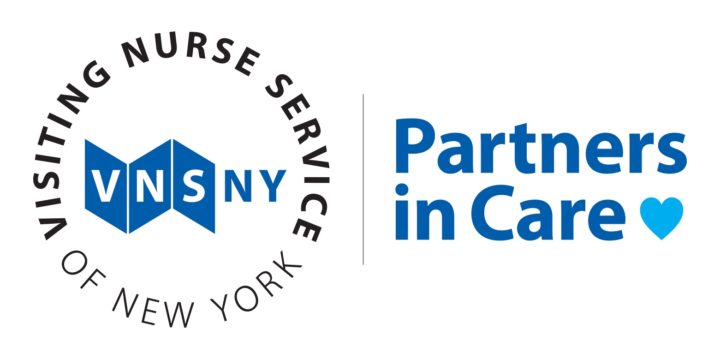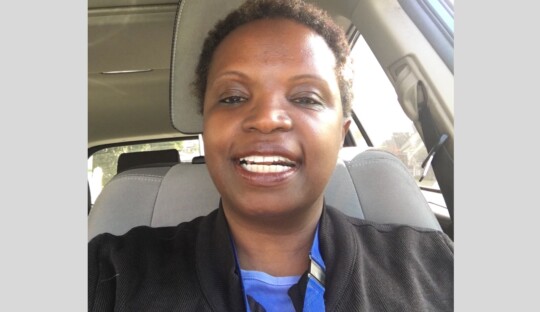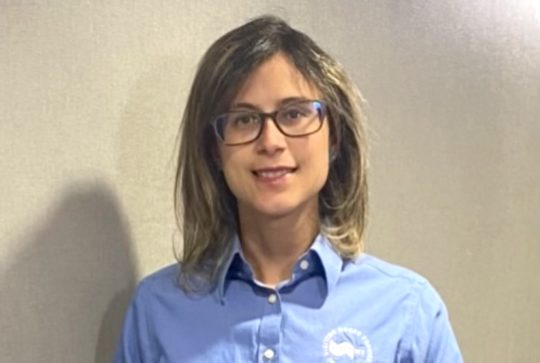11 Interesting Facts about VNSNY’s Rehabilitation Therapists
In recognition of National Rehabilitation Awareness Week, which ran from September 16 through September 22, we’re pleased to share the following interesting facts about VNSNY’s outstanding rehabilitation therapy staff:
1) VNSNY has approximately 400 rehabilitation therapists on staff.
VNSNY’s home-based rehabilitation therapists make up the organization’s second largest group of healthcare clinicians, after registered nurses.

2) VNSNY’s physical therapists are experts not only in improving mobility and strength, but also in making patients’ homes safer.
In addition to working with patients on gross motor skills in order to improve their mobility, balance, and strength, our physical therapists (PTs) specialize in identifying and eliminating fall hazards like loose carpeting and poor lighting, and will also arrange for assistive equipment like chair lifts, shower chairs, and grab bars. VNSNY has a number of physical therapy assistants (PTAs) on staff as well, who provide similar services under the supervision of our PTs.
3) VNSNY’s occupational therapists can play an important role in boosting patients’ self-esteem.
VNSNY’s occupational therapists (OTs), along with a number of occupational therapy assistants (OTAs), work on the fine motor skills and coordination involved in the day-to-day activities that make patients’ lives livable. By helping people function, independently, ”occupational therapists can have a huge positive impact on people’s self-esteem,” notes Joe Gallagher, Director of Operations Support Services for VNSNY.
4) If a patient is having trouble swallowing food, a VNSNY speech-language pathologist is the best person to help.
In addition to helping patients regain their language and cognition skills, a big part of an SLP’s job involves teaching people to swallow safely following a stroke or other neurological injury. VNSNY speech-language pathologist Katherine Gildea recently completed swallow therapy with a patient recovering from head and neck cancer, enabling him to shift from a feeding tube to eating normally by mouth. “He was so appreciative,” says Katherine. “I really felt like we had accomplished this major quality-of- life goal together.”

5) Rehabilitation therapists work with patients as young as newborn infants.
VNSNY rehabilitation therapists care for patients at all stages of life, including infancy. The organization has a number of therapists—including PTs, OTs and one SLP specialist—trained in pediatric care. These clinicians are frequently asked to treat newborns with birth defects. This care can include anything from gentle stretching exercises to educating the parents on how to safely position and properly care for their baby.
6) Rehab therapists frequently work with hospice patients to improve their quality of life.
Each month, some 20 to 25 VNSNY Hospice patients are referred for our rehabilitation therapy services—most often to PTs, but also to OTs and SLPs on occasion. As with other home care patients, the therapists focus on improving the patient’s quality of life as much as possible, which can include training family caregivers in skills such as proper transfer techniques.

7) VNSNY therapists sometimes take their sessions outside the home, into the community.
For example, PTs may accompany patients outside their homes to help them learn to navigate walking through their neighborhood. Similarly, OTs might accompany a patient onto a bus to help them learn to use the MetroCard machine, while SLPs might bring their patients to the grocery store to practice communicating their order to the store’s clerk.

8) Partners in Care also employs rehab therapists to treat its private-pay clients.
In addition to these frontline therapists, Partners in Care employs a full-time PT as an instructor, to educate home health aides in transfer techniques and other skills.
9) VNSNY rehab therapists’ responsibilities include training new rehab clinicians.
VNSNY’s senior-level PT, OT, and SLP therapists serve as mentors for newly hired therapists. During their orientation process, each new hire is paired with a senior therapist to do joint field visits, with the experienced therapist offering practical guidance and support.
10) Rehab therapists also serve in a number of other VNSNY departments.
Rehabilitation therapy professions can serve as good preparation for other roles in addition to direct patient care. For example, licensed rehabilitation therapists in our workforce include VNSNY Home Care’s Regional Vice President for Queens, Long Island and Westchester; a number of Education Managers, Clinical Support Managers and Utilization Managers; VNSNY’s Palliative & Hospice Care Educator; several Home Care Consultants; and the Director of Provider and Corporate Compliance Operations.
11) VNSNY’s rehab therapists reflect the communities they serve.
“Our rehab staff is a diverse cross-section of true New Yorkers,” says Joe Gallagher. “They are part of the fabric of New York, and are totally dedicated to helping their fellow New Yorkers thrive in this city. I’m also proud to say that VNSNY’s rehab clinicians are the most versatile, flexible, talented and professional group of therapists I’ve ever worked with.”



